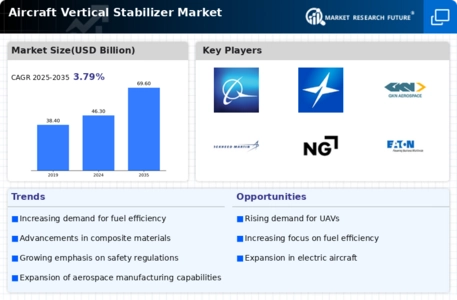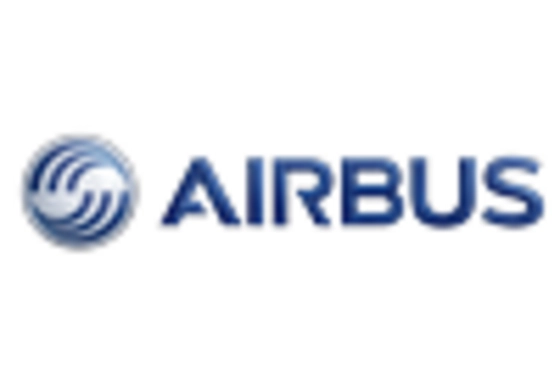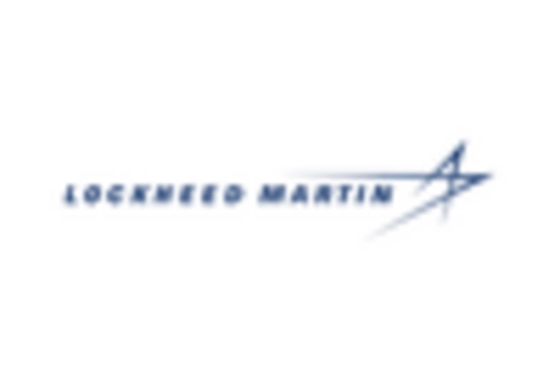Growth in Commercial Aviation
The Aircraft Vertical Stabilizer Market is poised for growth due to the expansion of commercial aviation. As air travel demand increases, airlines are investing in new aircraft to accommodate rising passenger numbers. This trend is reflected in the projected increase in aircraft deliveries, with estimates suggesting a need for over 39,000 new aircraft in the next two decades. Each new aircraft requires a vertical stabilizer, thereby directly impacting the market. Furthermore, the shift towards larger aircraft models necessitates advanced vertical stabilizer designs that ensure stability and control. This growth in commercial aviation is a significant driver for the Aircraft Vertical Stabilizer Market, as manufacturers strive to meet the evolving needs of airlines.
Technological Innovations in Design
Technological advancements are reshaping the Aircraft Vertical Stabilizer Market, with innovations in design and manufacturing processes. The integration of computer-aided design (CAD) and computational fluid dynamics (CFD) allows for more precise modeling of vertical stabilizers, enhancing their aerodynamic properties. These technologies enable manufacturers to create stabilizers that are not only lighter but also more efficient in terms of performance. The introduction of 3D printing technology further streamlines production, reducing lead times and costs. As a result, the Aircraft Vertical Stabilizer Market is witnessing a shift towards more sophisticated designs that improve aircraft handling and stability, catering to the demands of modern aviation.
Emerging Markets and Regional Growth
The Aircraft Vertical Stabilizer Market is witnessing growth in emerging markets, where increasing disposable incomes and urbanization are driving air travel demand. Regions such as Asia-Pacific and Latin America are experiencing a rise in middle-class populations, leading to a surge in air travel. This trend is prompting airlines in these regions to expand their fleets, thereby increasing the demand for new aircraft and, consequently, vertical stabilizers. Additionally, local manufacturers are beginning to enter the market, contributing to competitive dynamics. The expansion of air travel in these emerging markets presents a substantial opportunity for growth within the Aircraft Vertical Stabilizer Market, as stakeholders seek to capitalize on the rising demand.
Increasing Demand for Fuel Efficiency
The Aircraft Vertical Stabilizer Market is experiencing a notable surge in demand for fuel-efficient aircraft designs. Airlines and manufacturers are increasingly prioritizing aerodynamic features that enhance fuel economy. Vertical stabilizers play a crucial role in reducing drag and improving overall aircraft performance. According to recent data, aircraft equipped with advanced vertical stabilizers can achieve fuel savings of up to 10 percent. This trend is likely to continue as the aviation sector seeks to lower operational costs and meet stringent environmental regulations. Consequently, the focus on fuel efficiency is driving innovation in vertical stabilizer designs, leading to the development of lighter and more effective materials that contribute to enhanced performance in the Aircraft Vertical Stabilizer Market.
Regulatory Compliance and Safety Standards
The Aircraft Vertical Stabilizer Market is significantly influenced by regulatory compliance and safety standards imposed by aviation authorities. As safety remains a paramount concern in the aviation sector, manufacturers are compelled to adhere to stringent regulations regarding the design and performance of vertical stabilizers. These regulations often require enhancements in structural integrity and aerodynamic efficiency, prompting innovation within the industry. Compliance with these standards not only ensures passenger safety but also enhances the marketability of aircraft. Consequently, the need for compliance drives investment in research and development, fostering advancements in the Aircraft Vertical Stabilizer Market.

















Leave a Comment